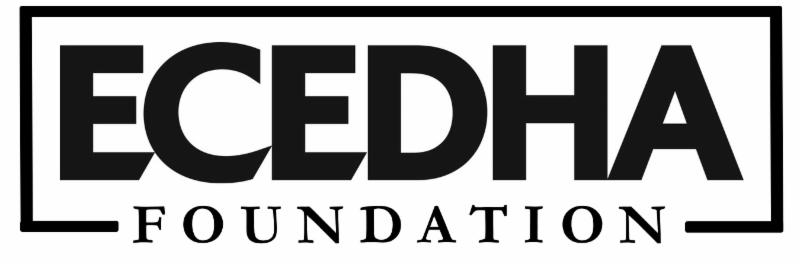|
|
Badri Roysam,
University of Houston |
Dear ECEDHA Members, Industry Partners, and Colleagues,
Welcome to the May 2015 issue of the Source. The summer is finally here. Most of our students are headed to their homes, and then onto their summer internships. The students who have made it through the ECE curriculum, especially the capstone design experience, are ordering their caps and gowns. A few remain on campus to take summer courses, and work on undergraduate research projects. Time to start working on the new fall arrivals!
This issue of the Source may inspire you to look into the idea of transforming your undergraduate laboratories into a Maker Space. The idea of designing and fabricating prototypes has always been, and will remain, a core engineering activity. So what's the buzz all about?
|
 |
 |
|
Barry Sullivan,
ECEDHA
|
A Foundation for the Future
Wayne Bennett, former senior vice provost and graduate school dean at Clemson, made an eloquent case for supporting the newly created ECEDHA Foundation at the 2015 Annual Conference. Wayne spoke from the perspective of one of the founding board members of the Association, reflecting on more than twenty-five years of ECEDHA history from a very personal point of view.
>> Read more
|
 |
|
The Omron Lab at Northern Illinois University
By Ji-Chul Ryu, Assistant Professor, Mechanical Engineering
Students in the College of Engineering and Engineering Technology at Northern Illinois University do not limit their engineering knowledge to a single field. Since the Omron Robotics and Mechatronics Lab has been created through financial and equipment donations from Omron in 2013, this lab has provided endless opportunities for students in our engineering departments allowing them to explore the areas of design, building, control, and vision in the robotics and mechatronics field. In the lab, students find four lab stations, two advanced robotics research stations, three large breakout research platforms, and a latest projection media system with various electronic equipment and components being provided.
|
|
ECE MakerSpaces: The new "social network" for designing and prototyping
By Badri Roysam, University of Houston
Once dismissed as the pastime
du jour for teenagers, social networks, ranging from LinkedIn to Facebook have had a surprising and a lasting impact on humanity. In hindsight, this is not surprising, since humans are innately social beings, and our social context has an overarching influence on our overall learning experience. As engineers, we are trained to work in teams that are often cross-disciplinary. It could be argued that engineering teams are an administrative creation. On the other hand, social networks have an entirely different origin - they are organic self assembled entities with entirely different engagement dynamics. As noted by Albert-Laszlo Barabasi in his 2014 book
Linked: How Everything is Connected to Everything Else and What It Means for Business, Science, and Everyday Life, social networks are surprisingly powerful because of the underlying mathematics of graph theory and communication. This is ECE territory, and we can harness this stuff.
|
 |
The Magic of Engineering
ECEDHA is a unique international meeting where engineering academics convene to discuss and advance the art of engineering education. These days, such discussions seem to be livelier than ever. We are engaged in debate on fundamental structural changes to the way we prepare the next generation of engineering leaders. We are trying to flip classrooms; go on-line in a massive and open way; and all of our things are now being connected to the Internet. But must it be this complicated? I asked this question at this year's annual meeting in Hilton Head.
|
 |
 |
|
End of California's Digital Campus is a Blow for MOOCs
By The Hechinger Report (April 14, 2015, USNews.com)
"Reinvent." That was the giddy catchword of a plan by the University of California to create an all-digital "campus" that would revolutionize higher education by providing courses online for students shut out of the system's brick-and-mortar classrooms at a time of high demand but falling budgets.
|
|
Fighting the Next Generation of Cyberattacks
By University of Utah (April 16, 2015, ECNMag.com)
The next generation of cyberattacks will be more sophisticated, more difficult to detect and more capable of wreaking untold damage on the nation's computer systems. So the U.S. Department of Defense has given a $3 million grant to a team of computer scientists from the University of Utah and University of California, Irvine to develop software that can hunt down a new kind of vulnerability that is nearly impossible to find with today's technology. >> Read more
|
|
Explore Resources for Women Undergrads in Science, Engineering
By Delece Smith-Barrow (April 20, 2015, USNews.com)
The lack of women in science and engineering has long been a sore spot within the U.S. education system, and it's not getting any better. From 2004 to 2014, the share of bachelor's degrees earned by women decreased in engineering; computer sciences; Earth, atmospheric and ocean sciences; physical sciences, mathematics, biological and agricultural sciences; and social sciences and psychology, according to a recent report from the National Student Clearinghouse Research Center.
|
|
Arizona State University to Offer Freshman Year Online, For Credit
By Nick Anderson (April 22, 2015, Washington Post)
To start college, the typical student must meet admission requirements (if any), enroll and pay tuition. But what if anyone anywhere could try out a prominent university's classes for a small fee and wait until the end to decide whether to pay tuition for credit toward a diploma? >> Read more
|
|
How to Attract Female Engineers
By Linda Nilsson (April 27, 2015, New York Times)
The figures are well known: At Apple 20 percent of tech jobs are held by women and at Google, only 17 percent. A report by the Congressional Joint Economic Committee estimates that nationwide about 14 percent of engineers in the work force are women. As a woman with a Ph.D. in biomedical engineering, I look at those numbers with despair.
>> Read more
|
|
Summer Camps with a Mission: To Create Cybersecurity Experts
By Wilson Ring (May 4, 2015, ECNMag.com)
At Vermont's Norwich University, 20 high school students will build computers they'll be able to take home. At Dakota State University in South Dakota, about 200 students will learn about programming. In Southern California, 250 middle school Girl Scouts will be given tiny computers, the chance to fly drones and earn special patches. And none of the children or their parents will have to pay a cent.
>> Read more
|
 |

The ECEDHA Foundation was announced at the 2015 ECEDHA Annual Conference this past March in Hilton Head, South Carolina. Executive Director, John Janowiak commented, "We're pleased that the ECEDHA leadership has established the Foundation to ensure the success of the organization for future generations."
The
Foundation has been established to guide, support, and fund significant educational programming activities to advance electrical and computer engineering education. In addition, the creation of an ECEDHA Endowment Fund will ensure the long-term viability of the Association and its academic services, as well as provide a stable source of program funding beyond the current activities of the Association.
The goals of the ECEDHA Foundation are to:
- Create the seeds for technology innovation in industry by enabling ECE faculty and their students to work at the cutting edge of their disciplines
- Enhance the engagement between the ECE academic community and industry
- Foster innovation in ECE curriculum development at member institutions to prepare the next generation for a global profession
- Increase ECE visibility and improve its image among prospective students, their parents, and the population in general
- Strengthen the ECE student pipeline to increase enrollments with well-qualified and motivated students
- Increase and strengthen diversity among the ECE faculty and student populations
Please consider giving a contribution to the ECEDHA Foundation. Your support is essential to reaching these goals.
Those who contribute by May 31, 2015 will be included as a member of the Founders' Circle and will receive special recognition as one of the Foundation's founding contributors.

|
 |
|
Have you renewed your 2015 ECEDHA Membership?
Membership renewal is now underway!
2015 ECEDHA membership renewal for ECEDHA department heads is now underway. Membership runs on a calendar year beginning January 1st through December 31st.
Renew your membership today to keep receiving ECEDHA membership benefits, including:
- Access to the ECEDHA Annual Conference and ECExpo
- Complimentary registration for ECEDHA's ECE Webinars
- The opportunity to participate in the ECEDHA Annual Survey, a valuable tool in benchmarking your organization in lab and office space, faculty and department head salaries, research budgets, student retention, graduation rates, and much more.
- Complimentary job posting service via the ECEDHA website
|
|
|
| Produced by: |
 |
|
|
On Demand Webinar
Sponsored by COMSOL
|
|
On Demand Webinar
Sponsored by Quanser
|
|
On Demand Webinar
Sponsored by ANSYS
|
|
On Demand Webinar
Sponsored by Piazza
|
|
On Demand Webinar
Sponsored by Quanser
|
|
On Demand Webinar
Sponsored by COMSOL
|
Save the Date!
2016 ECEDHA Annual Conference
and ECExpo
March 18-22, 2016
Hilton La Jolla Torrey Pines
La Jolla, California
|
|
ECEDHA Member and
Partner News
|
IEEE International Conference on Complex Systems Engineering 2015
November 9-11, 2015 in
Storrs, CT, USA
Hosted by the University of Connecticut
|
2015 African Engineering Deans Council Annual Conference
September 17-18, 2015 in
Addis Ababa, Ethiopia
Hosted by the Addis Ababa Institute of Technology
|
|
 |
|